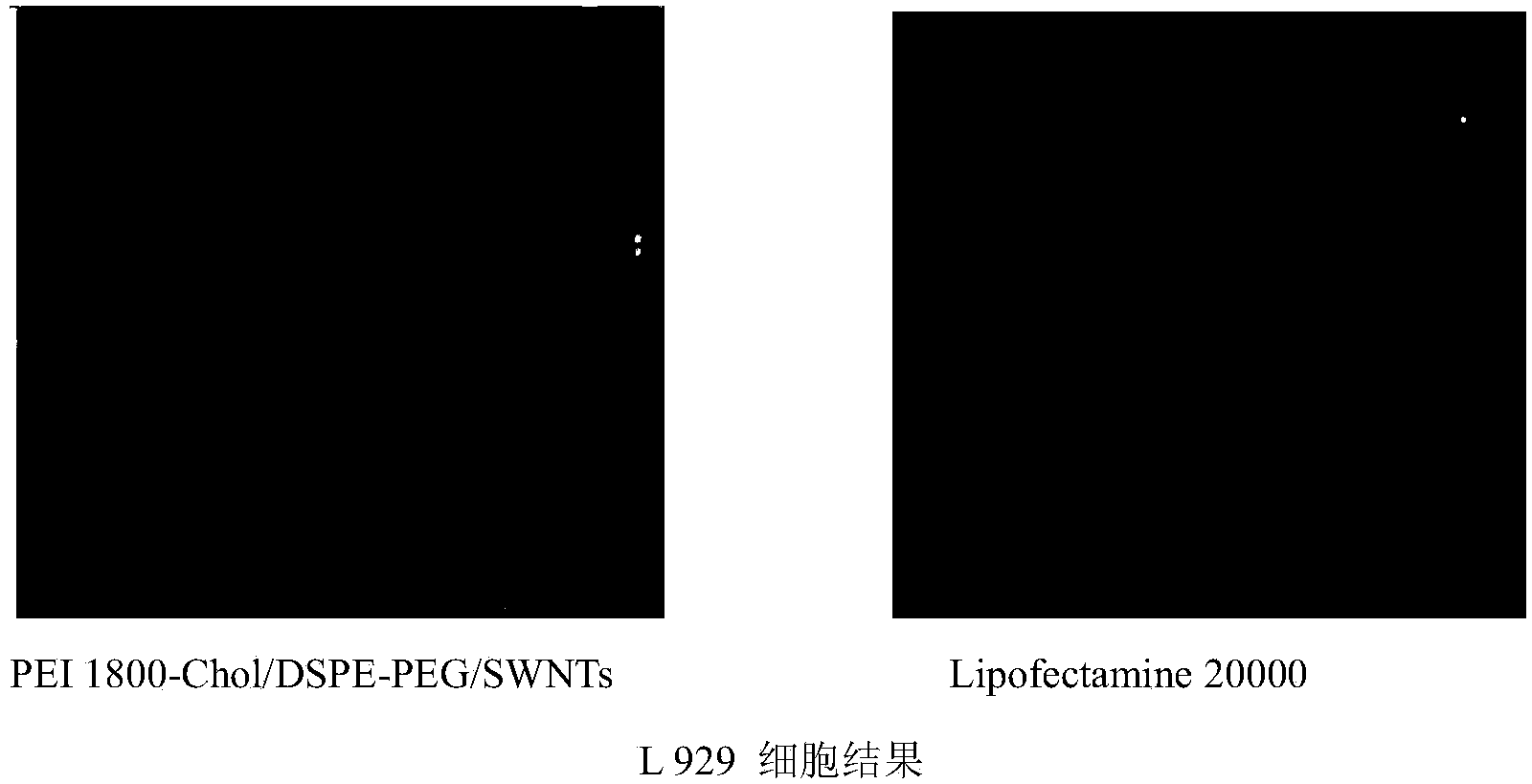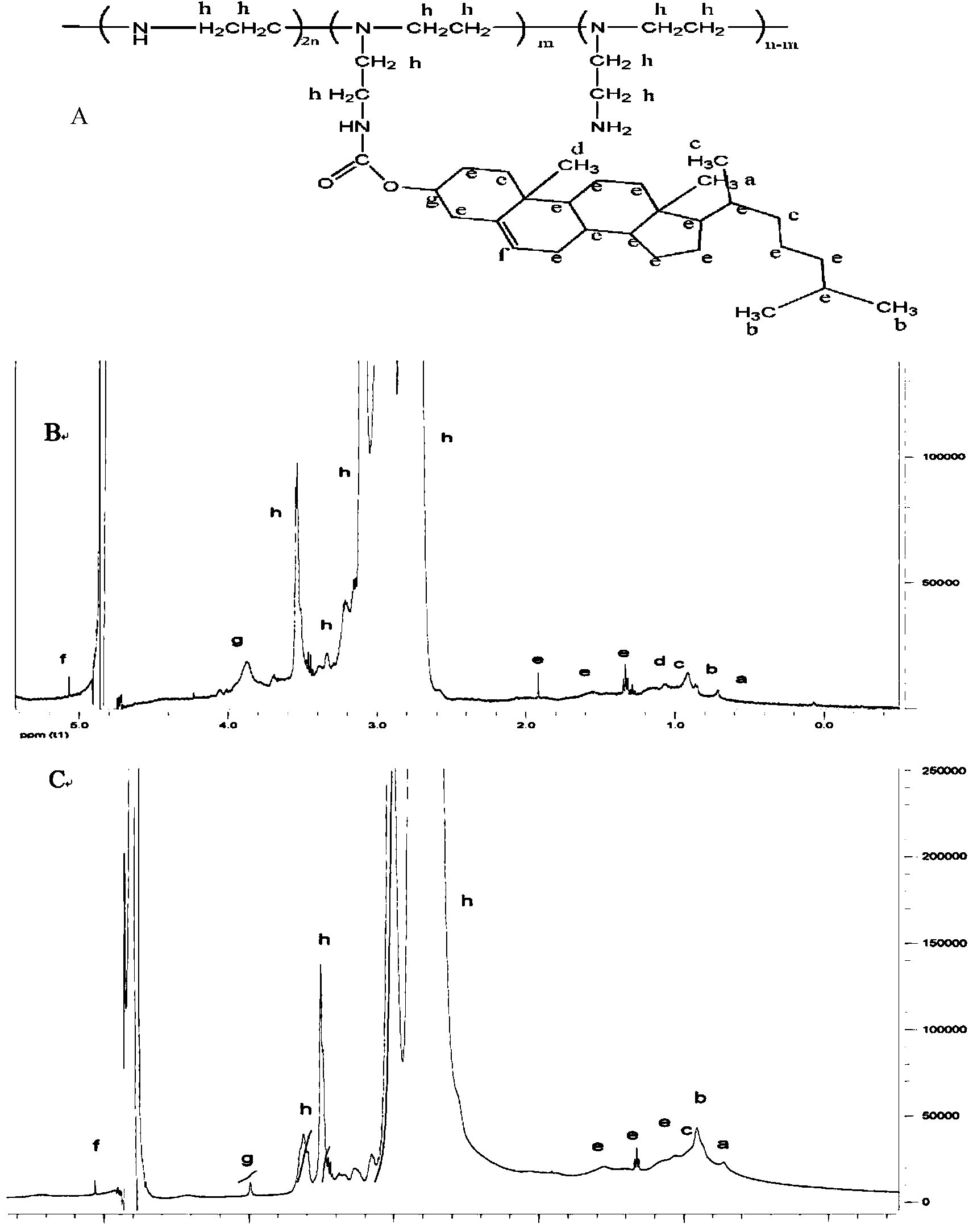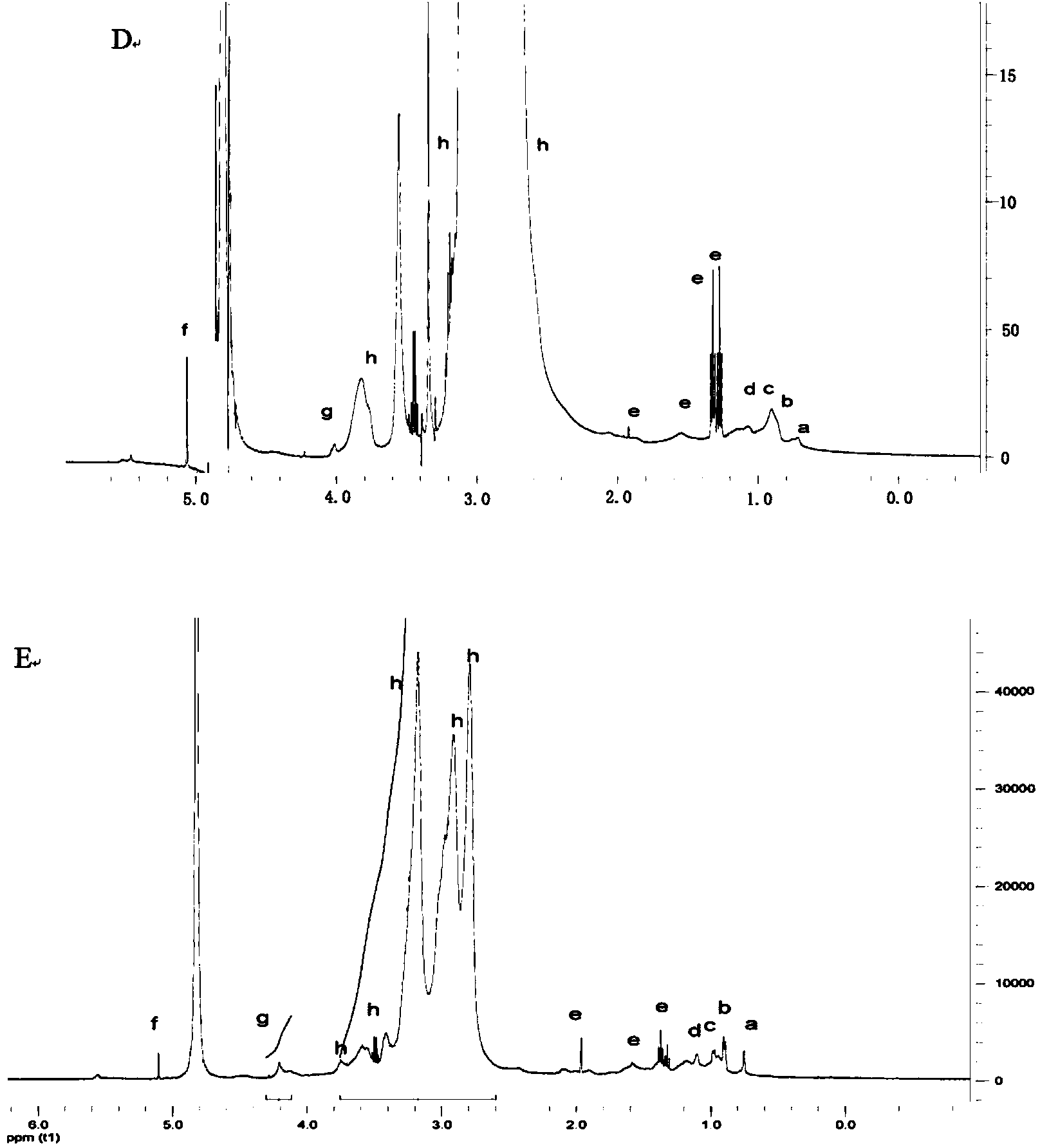Carbon nano tube complex gene vector system and preparation method thereof
A carbon nanotube composite, carbon nanotube technology, applied in gene therapy, drug combination, pharmaceutical formulations, etc., can solve problems such as destroying carbon nanotube structure, achieve good biocompatibility, excellent anti-tumor effect, and simple operation easy-to-control effects
- Summary
- Abstract
- Description
- Claims
- Application Information
AI Technical Summary
Problems solved by technology
Method used
Image
Examples
Embodiment 1
[0022] Example 1: Synthesis of polyethyleneimine-cholesterol
[0023] Weigh 1 g of branched polyethylenimine (0.6kDa, 1.8kDa, 10kDa, 25kDa) with different molecular weights, put them in a 50mL round bottom flask, add 10mL of anhydrous dichloromethane (dehydrated with molecular sieve) and 100uL The mixed solution of triethylamine was stirred in an ice bath for 30 minutes to obtain a PEI solution; 1000, 330, 60, and 24 mg of acid chloride cholesterol were weighed, dissolved in 5 mL of ice anhydrous dichloromethane, and the solution was slowly added dropwise to the above PEI solution The dropwise addition was completed within 30 min; the mixture was stirred and reacted for 12 h under ice-bath conditions. The reacted solution was transferred to an eggplant flask, and the solvent was removed by rotary evaporation. The obtained product was dried in vacuum, dissolved by adding 50mL HCl (0.1M), and extracted 3 times with 100mL dichloromethane to remove unreacted acyl chloride cholest...
Embodiment 2
[0025] Embodiment 2: Preparation of carbon nanotube composite system
[0026] Weigh 1 mg of single-walled carbon nanotubes (timesnano) or 1 mg of multi-walled carbon nanotubes (Nanjing Xianfeng Nano Material Technology Co., Ltd.), 10-50 mg of PEI-Chol prepared in Example 1 (respectively: PEI600-Chol50 mg , PEI1800-Chol30mg, PEI10000-Chol20mg, PEI25000-Chol10mg) and 2mg DSPE-PEG 2000(Xi'an Ruixi Biotechnology Co., Ltd.) Add 5 mL of deionized distilled water to a 50 mL round-bottomed flask, and clean it with an ultrasonic wave with a power of 300-600 w for more than 30 min. Take the carbon nanotube dispersion, centrifuge at 10,000-13,000rpm for 30 minutes, then take the supernatant, discard the carbon nanotube aggregates, centrifuge to get the supernatant, repeat the centrifugation for 3 times, collect the supernatant in a 100kDa centrifugal filter (Millipore), and centrifuge Wash, centrifuge at 4000rpm for more than 30min, discard free polymer molecules, transfer the concentra...
Embodiment 3
[0027] Example 3: Characterization of polyethyleneimine-cholesterol
[0028] Take the PEI-Chol obtained in Example 1, and use IR and 1H-NMR to characterize its functional group and chemical structure; use hydrochloric acid to perform potentiometric titration to measure its buffering capacity. IR results such as figure 2 As shown, 3300~3500cm -1 The nearby -NH absorption peak is -NH of PEI-Chol 2 stretching vibration peak; 2900cm -1 The peak represents the methylene C-H stretching vibration, indicating the presence of -NH- and CH in the polymer PEI 2 -; figure 2 1776cm in A -1 It is the absorption peak of the C=O bond, because the electron-withdrawing induction effect of the chlorine atom in cholesterol formyl chloride moves the position of the carbonyl absorption peak to the high frequency direction; figure 2 The carbonyl absorption peak in B-E is 1650cm -1 , which indicates that -Cl in C=O in cholesterol formyl chloride is replaced by amino group in PEI to form an a...
PUM
| Property | Measurement | Unit |
|---|---|---|
| molecular weight | aaaaa | aaaaa |
Abstract
Description
Claims
Application Information
 Login to View More
Login to View More - R&D
- Intellectual Property
- Life Sciences
- Materials
- Tech Scout
- Unparalleled Data Quality
- Higher Quality Content
- 60% Fewer Hallucinations
Browse by: Latest US Patents, China's latest patents, Technical Efficacy Thesaurus, Application Domain, Technology Topic, Popular Technical Reports.
© 2025 PatSnap. All rights reserved.Legal|Privacy policy|Modern Slavery Act Transparency Statement|Sitemap|About US| Contact US: help@patsnap.com



